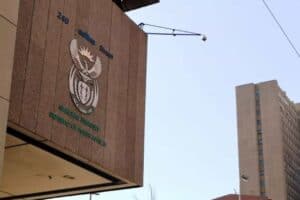The Department of Defence has engaged with Treasury 'on several occasions to find workable solutions'.

More than 2 700 South African National Defence Force (SANDF) personnel aged 55 and older have been released to create space for new recruits and rejuvenate the military.
In 2020, the Department of Defence raised concerns about the urgent need to refresh the SANDF, citing an increasing number of personnel considered over-age.
Although the Department of Defence has implemented initiatives like the Military Skills Development System (MSDS) recruitment drive and the University Reserve Training Programme (URTP) over the years to encourage younger people to join its ranks, the National Treasury has expressed concerns about the rising average age of army personnel and has put forward proposals to address the issue.
ALSO READ: Motshekga aims to turn SANDF around, but ‘political team doesn’t inspire confidence’
Parliament previously emphasised the need to revitalise skills within the SANDF, noting that the lack of a fully operational feeder system has contributed to an “ageing force”, particularly in the Reserve Force.
The recruitment process has not kept pace with the rate at which soldiers are leaving the army service.
The department informed Parliament in March 2023 that the Reserve Force largely consisted of older troops, with an average age of 45, many of whom were often not deployable.
The retirement age is 60, according to Regulation 21 of Chapter III of the General Regulations for the SANDF.
SANDF officials released
In a recent parliamentary reply, Defence and Military Veterans Minister Angie Motshekga disclosed that the Department of Defence has been implementing Treasury’s proposals, including mobility exit mechanisms, the employee-initiated severance package (EISP), and early retirement for public service personnel, to rejuvenate the SANDF.
As a result of these exit strategies, 2 781 officials, aged between 55 and 60, were released during the 2022/2023 and 2023/2024 financial years to “create upward mobility for rejuvenation”.
READ MORE: Ailing SANDF needs private funding injection – industry body
Motshekga stated that the department plans to bring in new recruits through the MSDS programme, but this will depend on funding.
“The [department] plans to recruit the MDSD, as a feeder system in order to rejuvenate and replace officials who exited the department through relevant exit mechanism, depending on financial resources,” she said in response to a question posed by Economic Freedom Fighters (EFF) Member of Parliament Carl Niehaus.
New SANDF intakes?
The minister further revealed that the department has engaged with Treasury “on several occasions to find workable solutions” to the SANDF’s funding challenges, which have hindered the rejuvenation process.
She also noted that the sixth Parliament’s recommendations were taken into account when implementing the exit strategies.
READ MORE: Cash-strapped SANDF facing R1.5bn in civil claims, including for soldiers shot during training
“The aim of the aforementioned was to address stagnation in rank, bring down the high average age profile of soldiers and create annual recruitment opportunities.
“The [department] will rejuvenate by exiting targeted groups that are in the high rank-age profile which will enable the inflow of young soldiers through the MSDS intakes depending on adequate funding,” Motshekga concluded.
Northern Cape veld fire
In a separate response, Motshekga addressed the veld fire in the Northern Cape that claimed the lives of six soldiers in October last year.
The fire swept through the SANDF Combat Training Centre in Lohatla, causing significant damage to military vehicles and equipment.
A year after the incident, Inkatha Freedom Party (IFP) MP Inkosi Cebekhulu raised questions about the steps the Department of Defence has taken to replace the destroyed equipment and prevent future incidents.
Motshekga confirmed that some of the damaged equipment has already been replaced.
“Vehicles and equipment that were partially damaged, have been repaired, whilst vehicles damaged beyond repair have not been replaced. Personal military equipment and battle kits destroyed, were re-issued,” the parliamentary response reads.
“Firefighting equipment are being repaired through own capability and industry, whilst personnel have been deployed to SA Army Combat Training Centre on a continuous basis,” she added.






